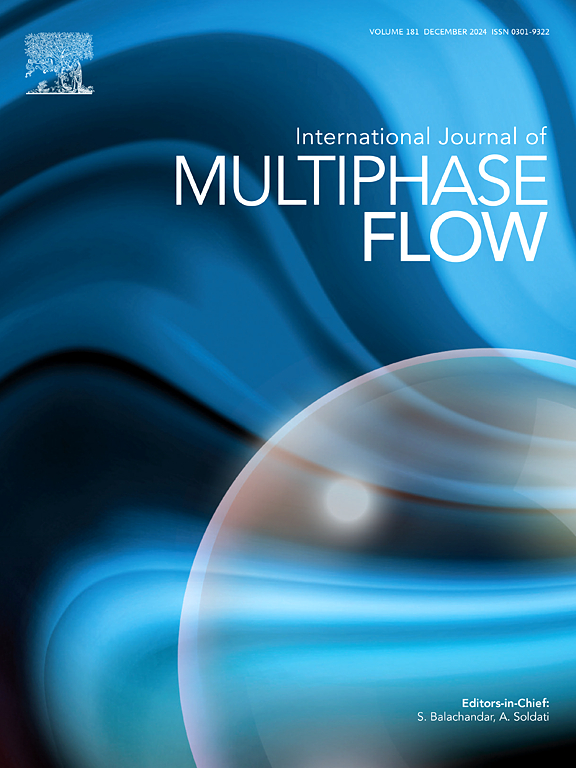Experimental study of air–water flow properties in the breaking roller of dam-break waves
IF 3.6
2区 工程技术
Q1 MECHANICS
International Journal of Multiphase Flow
Pub Date : 2025-01-06
DOI:10.1016/j.ijmultiphaseflow.2024.105119
引用次数: 0
Abstract
Dam-break waves are highly unsteady long-wave phenomena, characterized by a breaking front with a strong recirculating air–water mixture. While the air–water flow properties of steady flows have often been investigated, the understanding of dynamic processes in unsteady multiphase flows remains limited. In this experimental study, a new approach was implemented to analyze the air–water flow properties of highly unsteady flows in the form of dam-break waves using ensemble-averaging techniques to account for short-duration measurements. The new dataset includes four different flow conditions, providing novel insights into the relation between various hydrodynamic characteristics and key air–water flow properties, including bubble characteristics and void fraction. The void fraction profiles indicated the presence of a turbulent shear layer along with a recirculation zone close to the free surface, showing analogies with similar steady and unsteady flow phenomena. Variations in the Froude number were shown to strongly affect the number and size of air bubbles, particularly in the shear layer. Higher depth-averaged air concentrations were found with increasing Froude numbers, reaching up to 40% for Fr = 5.14. Overall, the results confirm the importance of considering the presence of air in dam-break waves and demonstrate the suitability of this new methodology for investigating air–water flow properties in highly turbulent flows. They offer a deeper understanding of the multiphase nature of dam-break waves, which is relevant for a wide range of processes in coastal and hydraulic engineering.

求助全文
约1分钟内获得全文
求助全文
来源期刊
CiteScore
7.30
自引率
10.50%
发文量
244
审稿时长
4 months
期刊介绍:
The International Journal of Multiphase Flow publishes analytical, numerical and experimental articles of lasting interest. The scope of the journal includes all aspects of mass, momentum and energy exchange phenomena among different phases such as occur in disperse flows, gas–liquid and liquid–liquid flows, flows in porous media, boiling, granular flows and others.
The journal publishes full papers, brief communications and conference announcements.

 求助内容:
求助内容: 应助结果提醒方式:
应助结果提醒方式:


